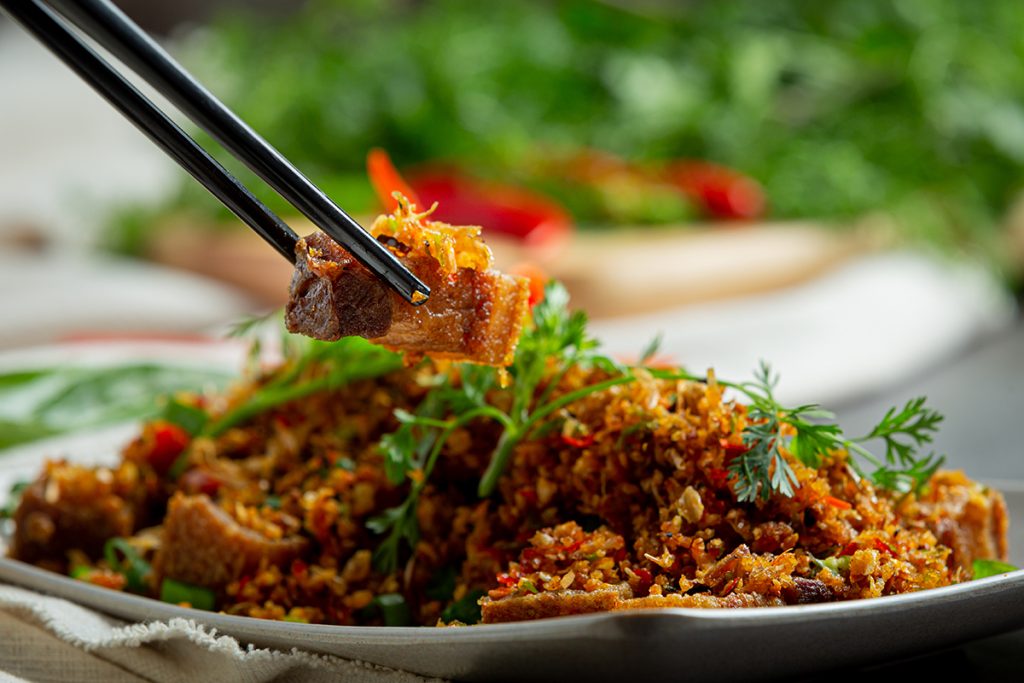How to create the best fried rice
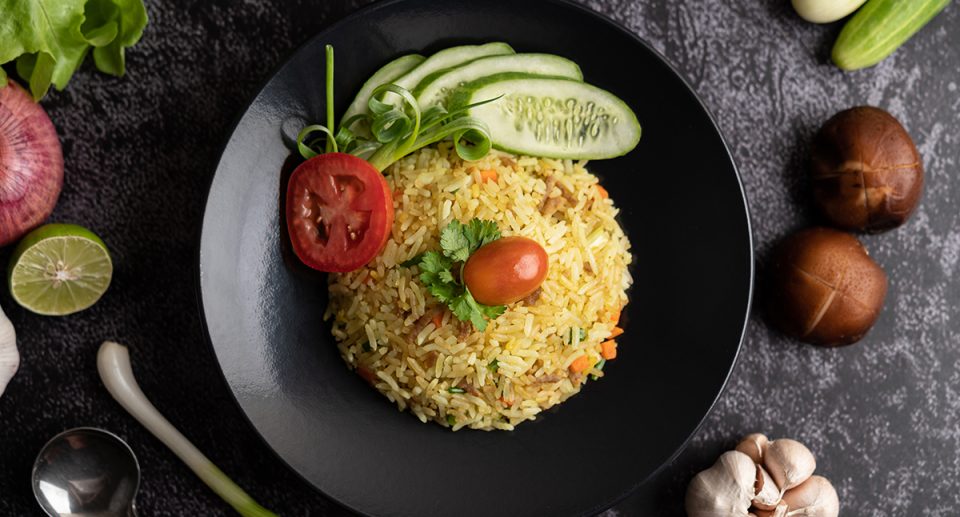
Fried rice, globally renowned and tracing its roots to ancient China, involves stir-frying cooked rice with diverse ingredients like vegetables, meat, and seasonings. Variations of this dish span across Southeast Asia and even reach as far as Nigeria and Peru.
While seemingly simple, mastering fried rice demands precise technique and ingredient selection. A Cantonese-style head chef offers expert tips for achieving restaurant-quality results at home.
Rice
Choosing the right rice for fried rice can be tricky. While long-grain Jasmine rice is preferred for its dry texture in Chinese-style fried rice, medium-grain rice is also acceptable. However, Chinese cuisine tends to avoid sticky short-grain rice, unlike Japanese-style fried rice, which intentionally uses it for a moist consistency.
Regional preferences influence rice selection. Additionally, achieving the signature aroma in fried rice depends on heating the pan properly to develop ‘wok-hei,’ which contributes to restaurant-quality flavor.
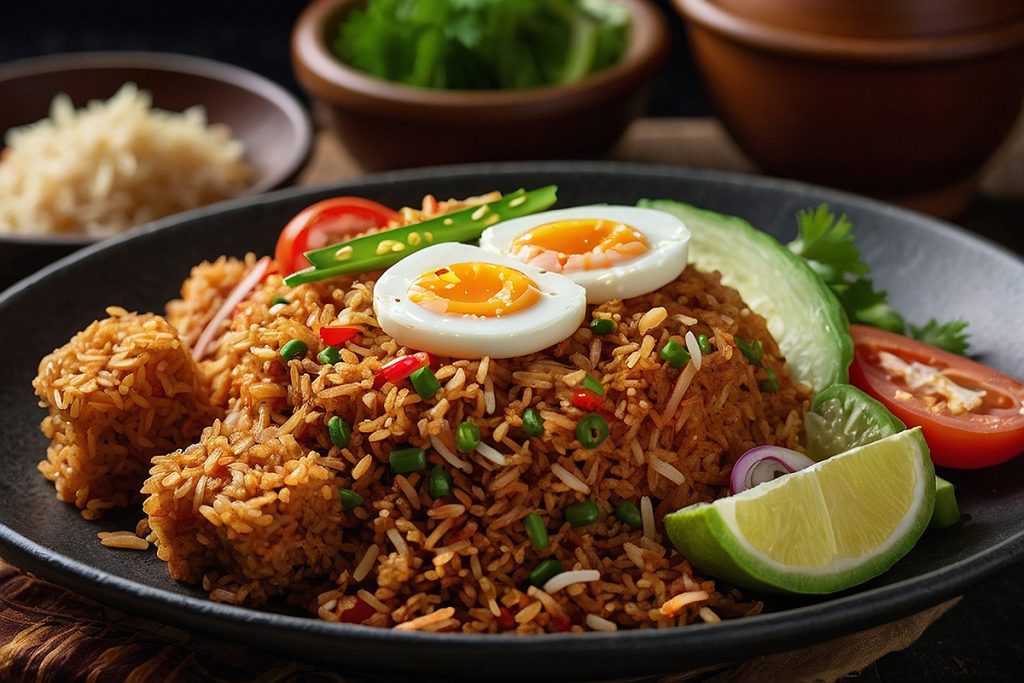
Leftover rice
For perfect fried rice, always use pre-cooked, cold rice instead of uncooked or freshly made hot rice. Cold long-grain rice works best, ensuring separate grains and a better texture. Refrigerating cooked rice overnight enhances its texture through a process called retrogradation, preventing mushiness in the final dish.
Liquid seasonings
Liquid seasoning can enhance fried rice, but use it sparingly to avoid excess moisture, which can steam the ingredients. Some chefs prefer salt to soy sauce for a lighter-colored dish. Other options include oyster sauce, fish sauce, and Worcestershire sauce, depending on the recipe. Mirin adds sweetness without wetting the rice, while hot chili oil or sauce can provide a spicy twist during stir-frying.
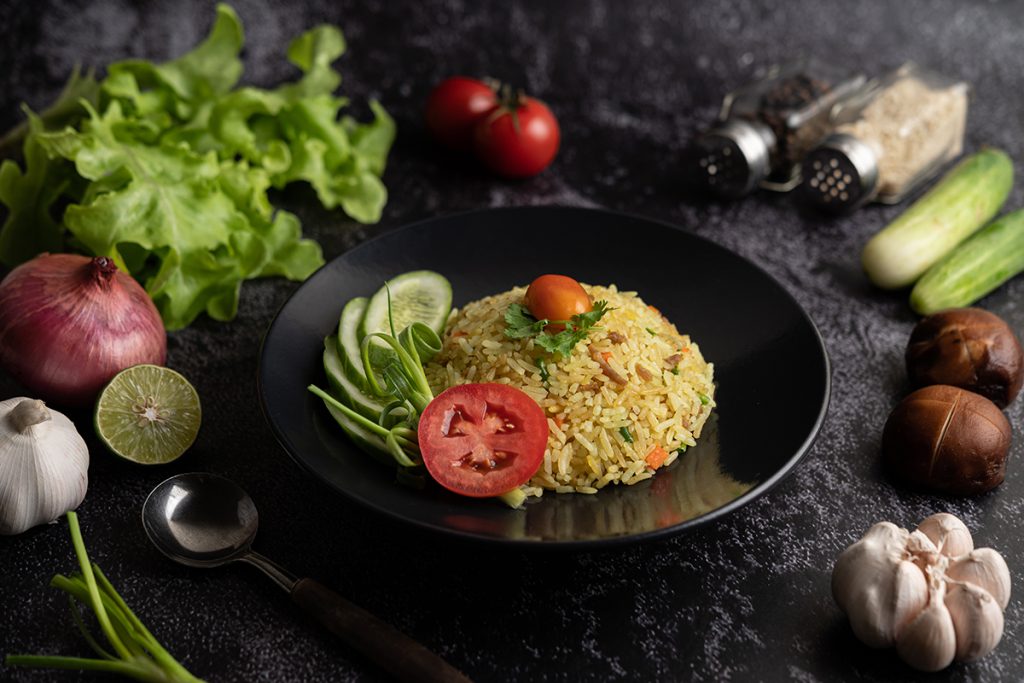
Dry seasonings
Dry seasonings, reflecting personal or regional tastes, enhance fried rice. Common options like Cajun spice or curry powder are popular choices among chefs, accompanied by staples such as garlic powder, onion powder, black pepper, red pepper flakes, and salt.
Unique spices distinguish regional variations: Sichuan-style fried rice boasts the mild, citrusy notes of Sichuan peppercorns, while Japanese versions highlight the umami richness of katsuobushi, or bonito flakes, along with nori, dried seaweed strips.
Nigerian fried rice features a blend of turmeric, curry powder, thyme, black pepper, and chili powder, often cooked with meat, seafood, and vegetables in broth or coconut milk.
Additionally, cornstarch is sometimes used to maintain individual grain separation during stir-frying, despite not being a spice.
Aromatics
To make restaurant-quality fried rice at home, use aromatics like garlic, ginger, red pepper, scallions, and lemongrass. Chefs often prefer onions and scallions for added flavor complexity. Start by cooking these aromatics in hot oil before adding other ingredients to infuse the oil and enhance the dish’s taste.
Cooking them on lower heat prevents burning, with onions needing about five minutes, garlic two to three, and ginger and dried chili peppers just 30 seconds before continuing with the recipe.
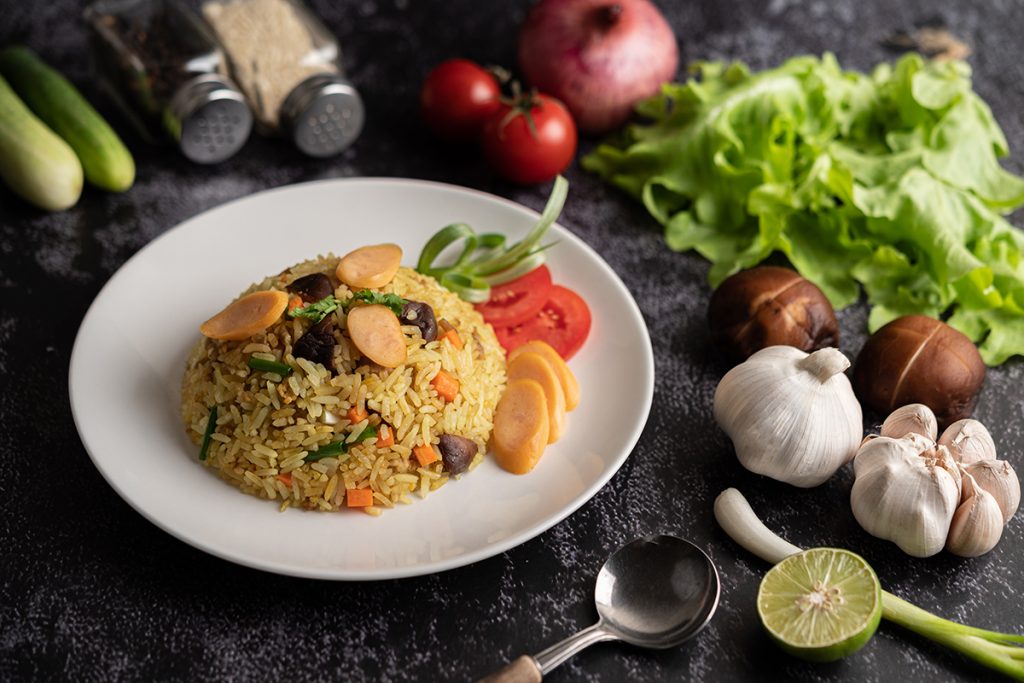
Fermented ingredients
Fermented ingredients are common in fried rice, with options varying by region. Naem, a Southeast Asian fermented pork sausage, and pla som, fermented carp, are used in Thai fried rice. Other choices include miso paste and tempeh.
Kimchi, a popular Korean dish of fermented vegetables like cabbage, ginger, herbs, and fish sauce, brings a unique flavor to fried rice. Kimchi fried rice, a traditional Korean dish, can incorporate leftover kimchi juice or the kimchi itself. The flavor of the juice intensifies with aging, typically around two weeks, enhancing its sour, tangy taste.
Bacon and gochujang, a spicy Korean chili paste with fermented soybeans, are common additions to kimchi fried rice.
Oil
When making fried rice, choose oils with high smoke points like peanut, canola, or unrefined avocado oil to prevent them from breaking down at high temperatures, which can cause a bitter taste and release harmful free radicals. Avoid using expensive extra virgin olive oil for this purpose.
Consider the flavor profile of the oil too. Some, like peanut or light sesame oil, offer a mild nutty flavor that pairs well with fried rice. However, be cautious as the smoke point of light sesame oil can vary. Dark sesame oil, with its intense flavor and low smoke point, is best used sparingly.
Alternatively, neutral oils like soybean oil let the ingredients’ flavors shine through and are favored by some chefs. Remember to heat the pan before adding soybean oil for optimal stir-frying results.

Butter or lard
While lard offers rich flavor in fried rice, health-conscious trends favor alternatives like soybean oil in modern restaurants. Some still prefer bacon fat for its richness. Butter, not common in Chinese-style recipes, adds richness to certain Japanese versions.
Due to its lower smoke point, it’s best to cook Japanese fried rice on medium-high heat or mix butter with oil for higher temperatures, stirring frequently to prevent burning and achieving a creamier texture.
Egg
In fried rice, eggs are a key component, often added for their distinct flavor. Two methods exist for incorporating them: Chinese-style fried rice involves cooking eggs separately and adding them back in at the end, creating noticeable egg chunks throughout.
In contrast, Japanese fried rice cooks the eggs with the rice, resulting in a uniformly golden-colored dish.
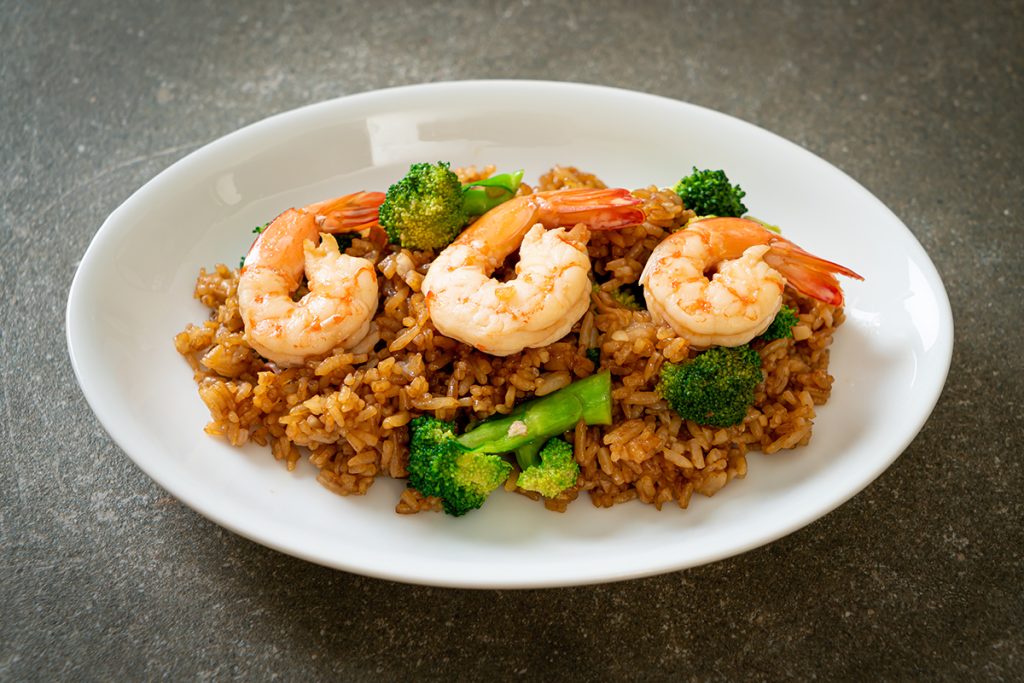
High-protein ingredients
Fried rice offers versatility with high-protein ingredients, often utilizing leftover proteins like chicken, steak, or ham. Chinese variations feature red meat and seafood, while Japanese versions focus on seafood like fish roe, salmon, and octopus. Plant-based options such as tofu, tempeh, edamame, peas, or legumes cater to vegetarians.
For optimal texture, cook proteins separately before adding them to the rice to prevent mushiness from meat juices. Cooking raw meat directly in the rice poses food safety risks and uneven cooking. Choose firmer proteins to maintain integrity when mixed, avoiding disintegration common with flaky fish.
Vegetables
A variety of vegetables can enhance fried rice, from carrots, onions, and broccoli to mushrooms, bell peppers, and more. For a unique touch, try pickled carrots and mustard greens. Vegetables not only add color but also provide vital nutrients.
Like meat, it’s important to cook vegetables before mixing them with the rice to ensure even texture. Precooking prevents crunchy, unevenly cooked vegetables. Some chefs suggest blanching vegetables first. Fresh, diced vegetables are preferable over canned or frozen ones. Exceptions are scallions and beansprouts, added last for crunchiness.
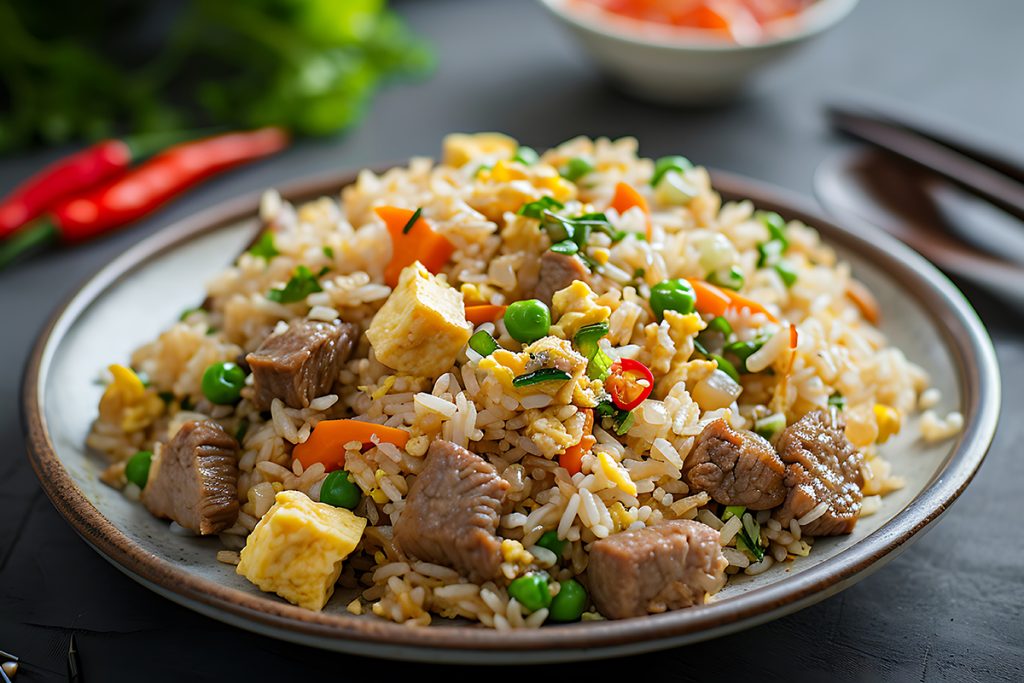
MSG
MSG, short for monosodium glutamate, is a controversial but effective flavor enhancer. While naturally found in foods like tomatoes, the synthetic form is commonly used in cooking. A small amount adds umami taste to dishes, but excessive use can cause nausea and headaches.
Use MSG sparingly, tasting the rice before adding more. As a powder, it seasons fried rice without making it mushy.
Sugar
When aiming to replicate restaurant-quality fried rice at home, some swear by sugar as a secret ingredient. It may surprise you that certain establishments incorporate sugar into savory dishes like fried rice to enhance complexity. When heated, sugar caramelizes, breaking down and releasing moisture, resulting in enhanced flavor, texture, and color.
While sugar enthusiasts exist, not everyone opts for its inclusion. Additionally, it’s worth noting that white rice naturally contains sugars. If your recipe calls for sugar but you prefer to not use it, feel free to do so.
